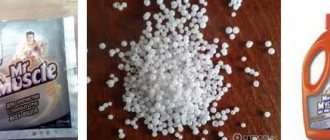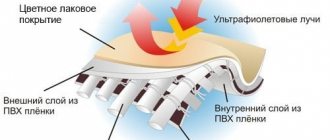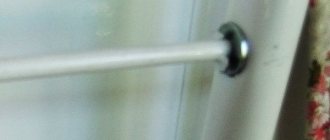The main type of failure that can occur during camping conditions is damage to the panel. It is usually made from polyamide and polyester fibers. They are resistant to stretching and tearing, but do not tolerate fire or punctures.
Chinese tents are in demand in tourist conditions, when you need to quickly arrange a place to sleep and relax. But many inexperienced tourists encounter difficulties during assembly. The simplicity of the design hides some features that need to be taken into account.
There is just one thing, and it is connected precisely with the manufacturability of the product. The main advantage of semi-automatic models often becomes a serious problem. In order for the tent to unfold itself in a few seconds, it must be folded in a predetermined way. And although all products have instructions, not everyone can do everything successfully the first time.
Types of Chinese tents
Products from the Middle Kingdom are in demand all over the world - they are cheaper than analogues from other countries, and sometimes are in no way inferior in quality. This also applies to tents. There are 3 types of them:
- Automatic or semi-automatic. Their advantage is fast, simple installation, taking only a few seconds. You just need to take the mini-tent out of the case. The rods will straighten, the fabric will stretch - everything is ready. They differ in bottom area and number of places.
- Fishermen's. It is an indispensable attribute of winter overnight fishing. They have more durable material, an insulated bottom and additional compartments for gear.
- Tourist tents. Great for camping in any conditions. There can be both automatic machines and stage-by-stage assembly.
Keep in mind that the characteristics of the tent will also depend on its material.
What do the numbers in the description mean?
There are conditional criteria that can be seen in the instructions for the tent:
- water protection
- water repellency
- waterproof
Conventionally, terpowling is considered a waterproof fabric, with good performance in retaining water, however, this material wears out quickly if the tent is placed on rocks. The downside is that a tent with a terpowling awning will be heavier and more difficult to fold compactly. Therefore, it is better to choose tents with a nylon bottom with a high rating of 10,000 mm.
Water resistance
When buying a tent, you need to pay attention to numbers such as: 3000 mm, 5000 mm, 7000 mm. What do they mean? Let's figure it out.
You buy a single-layer tent for its ease of setup and typically lower weight compared to a double-layer tent of the same category and size. Single-layer tents are easier and faster to install, which is especially important when setting up a tent in a snowstorm or if it is necessary to arrange a site on a mountain slope for setting up a tent. The price of such lightness is more condensation inside the tent and the lack of a separate protected place to store equipment (things in the tent absorb the same condensation).
What are single-layer and double-layer tents, why were the two designs invented and why are they good? Let's try to answer.
Single layer tents
Single layer tents are exactly what their name means: a tent made from a single layer of fabric. In industrial tents, this is durable, waterproof and airtight (non-breathable) fabric.
Double layer tents
Consists of two tents inserted one inside the other: an inner tent and an awning. As tents evolved from cotton to nylon, they included two pieces to achieve waterproof and breathable properties. The outer awning is water and airtight. The inner awning breathes, but does not retain moisture. By combining the two parts together, we get the benefits of both.
Pros and cons of single-layer tents
You buy a single-layer tent for its ease of setup and typically lower weight compared to a double-layer tent of the same category and size. Single-layer tents are easier and faster to install, which is especially important when setting up a tent in a snowstorm or if it is necessary to arrange a site on a mountain slope for setting up a tent. The price of such lightness is more condensation inside the tent and the lack of a separate protected place to store equipment (things in the tent absorb the same condensation).
Pros and cons of double layer tents
With a two-layer tent, you almost always have a dry interior and a place to store your belongings dry. Double-layer tents can have several entrances and vestibules in which you can store things without fear of condensation. But this comfort comes at a price - increased weight compared to single-layer analogues (of the same size and seasonal rank).
Double-layer tents also require more attention to setting up the tent and stretching the outer awning (if the inner and outer tents touch, the advantage of double-layering is lost), stretching vestibules. Moreover, during use it may be necessary to re-tighten the awning. The tent is made of nylon, which can stretch slightly with changes in humidity.
Which is better to use?
Single-layer tents work great in high altitude conditions, where it is usually dry and cold. Double-layer ones are great in rainy and humid conditions and when you need a lot of space to store your gear.
Subtleties of use
Ventilation is key with a single skin tent to keep condensation under control. Ventilation takes away heat. Your task is to try to find a balance between the warmth inside the tent and the amount of condensation.
I chose two tents for myself:
Have you already read the article “What to take on a hike? Cheat sheet for beginner hikers" and are ready to go get your first equipment.
If you are planning to get involved in overnight trips into nature, you will inevitably have to acquire a camping tent. If it is not yet clear whether this is your type of recreation or not, I do not recommend spending money on expensive equipment; it is better to “shoot” with friends or rent. If you firmly understand that you cannot live without forays into nature, but have no experience, this article is for you.
Let me make a reservation right away that there is no talk here about a cheap Auchan camping tent for gentle “tourists” who grab the cheapest equipment on sale and go camping only in sunny, windless weather. We will look at sensible equipment for an average budget and long-term use.
Tips for a fisherman: How to fold a tent into a round cover - All the nuances
I chose two tents for myself:
1) Canadian Camper CYCLONE 2 AL for traveling by car or if I take my dog with me. This is a fairly spacious and comfortable two-room apartment with a spacious vestibule for storing things, while being very reliable and easy to install, with reinforced corners and fire-resistant impregnation. She weighs about 3.2 kg. It costs around 11,000 rubles. Over 5 years of use, absolutely nothing has been worn out or damaged.
2) Splav Jaguar 2 v. 2 for wearing on yourself. It is light, comfortable, ventilates well in the heat, fits on a small piece of land, and is easy to install. Only small people, or a person and a dog, will be comfortable in it. And it’s very comfortable for one person in such a tent and you can put a backpack inside. Weighs approximately 2.1 kg. Costs 8500 rubles. Over the 2 years of use, it hasn’t leaked anywhere either.
For different budgets, I offer my selections of optimal tents with different capacities:
PS: In general, the most important thing on a hike is good company!
Now that you have a tent, it’s time to learn how to choose a sleeping bag by reading the article “ Choosing a sleeping bag for backpacking.” "
Or a hemisphere - the most common design option. The popularity is explained by the ease of installation and the ability to install the tent without guy ropes, which allows you to put it up even on bare rock (in windless weather). The disadvantage of the design is the smaller internal volume, but manufacturers have already learned to deal with this by adding small arcs on top or adding “Hub” elements.
How to fold a Chinese tent into a ring
Automatic tents are made from steel rods and polyester, which gives them an advantage in assembly. In the store, before purchasing, they show you how to properly assemble a Chinese tent. But in field conditions, this process becomes more complicated than it seems. Therefore, it is better to assemble it at home before going into nature, so that there are no problems.
Necessary:
- Place all the edges of the semi-automatic machine together so that it becomes flat.
- Place the resulting figure on a flat surface, pull one of the ends of the tent in your direction.
- Press it to the opposite side, the arcs will twist and be shaped like a figure eight.
- All that remains is to tighten the rods so that they turn into a circle. Then you can put it in a case.
Removing storm guy ropes
To quickly assemble a tent, you need to correctly pull out the storm guy ropes. They are usually located in the corners and serve to pull the awning tightly. As a result, the tent becomes stable, and even strong gusts of wind will not damage its structure.
Typically, storm guy ropes are assembled together with pegs. Since they are thin ropes that can become tangled, it is best to reel in the ropes immediately. This will speed up the re-installation of the structure in the future. To save time, you can simply fold the guy ropes in half and tie them with a simple self-tie knot.
How to assemble a winter tent with a figure eight
Winter model shelters are made from more advanced materials. Mostly synthetic fabric is used - lavsan, polyester, nylon.
To fold a Chinese winter tent, a similar method is used as for an automatic one. The corners are folded diagonally towards the middle. The shape is a square. The diagonal ends are taken in the hands - the upper left corner with the left hand, and the right corner with the right. Next, a circular movement is made - left away from you, right towards you. The tent rolls up into a circle and fits comfortably in the cover.
How to fold a children's tent into a ring
Children should have their own space in which they can spend time alone or with friends. A children's mini-tent has many differences from ordinary camping shelters. This includes the presence of numerous tunnels, the general shape of the structure, and the colors. It may have several exits or additional compartments.
Installing such structures is simple - automatic opening occurs in a few seconds. But some models are quite difficult to assemble. To simplify the work, it is better to know some of the assembly diagrams that the seller provides.
Children's tent "House"
There are only two ways. First:
- Standing opposite any of the walls of a square house, you need to grab the opposite edges of the square.
- It is important to push the rib that is in the right hand to the opposite corner. Folding will cause the mini tent to collapse.
- Position the house so that the roof faces forward and the floor faces you. Hands move towards each other, raising the right hand above the left. The frame, consisting of wire, will curl into a figure eight if the hands are connected.
- Place the resulting small rings one on top of the other. Now the tent can be placed in its cover.
The second method is used if the automatic tent cannot be folded into a figure eight:
- Fold up the walls of the house.
- The “floor” of the house rises upward, holding the side part (wire edge) with your left hand.
- The side wall is pressed against the raised part, which is held in the visual center by the right hand, and folds, as if wrapping around an invisible axis.
- The result is a ring shape, and the resulting second part is pressed against it.
- The circle is ready.
Assembly of components
Many tourists prefer automatic tents, the components of which do not need to be assembled separately. This is really convenient, because in order to unfold the tent, you just need to shake the structure.
But you will have to tinker with assembling such a tent: it needs to be folded perfectly correctly, so that in the future you can easily unfold the shelter by simply shaking it.
If you have a regular tent model, special covers should be provided for the components. They accommodate pegs, arcs, storm guy ropes and the awning itself. It is better to immediately collect all the accessories and place them in separate covers so that nothing gets lost during the process of assembling the tent.
Children's tent "Princess Castle"
To fold such a mini-tent, you need to know that its structure is slightly different from an automatic one. The frame consists of sticks stretched over an elastic band. They support the shape of the house. To assemble it you need:
- Pull out the stick supporting the dome of the tower (it is located in the center) and fold it.
- Take out all the sticks and also arrange them.
- The remaining base and tower fold up. The canvas must be carefully tucked inside.
- If you take the opposite parts of the circle and turn it, you get a figure eight.
- Connect the parts together and secure with an elastic band. Assembly is complete.
How to fix a tent
The main type of failure that can occur during camping conditions is damage to the panel. It is usually made from polyamide and polyester fibers. They are resistant to stretching and tearing, but do not tolerate fire or punctures.
Experienced tourists advise carrying reinforced tape with you; with it you can easily repair any microdamage.
At home, you need to carry out more thorough repairs. You just need to find the right fabric and glue. The best adhesive is Moment Crystal (it is specially designed for working with synthetic materials). Any piece of synthetic fabric will be suitable for the patch.
Before applying the glue, the surface around the puncture is degreased. Next, glue is applied in an even layer and a patch is placed.
After installing the patch, wait 10 minutes at room temperature.
Main characteristics
- weight - everything is clear here. The only thing is that sometimes they write min values. and max. which show how much the tent weighs with a minimum set of items for installation and with a full set. If you need a tent for camping, you don’t have to worry about the weight, because you only have to carry it to the car.
- water resistance - the characteristic indicates the height of the water column that the fabric can withstand. It’s a little more complicated here: Firstly, not all manufacturers honestly indicate these numbers; Secondly, with the same characteristics, different tissues manifest themselves differently. For example, fabric with silicone impregnation and just fabric of decent density have the same moisture resistance, but water, if it gets on the impregnated fabric, will roll off it, and on regular fabric it will accumulate and get wet over time. Water resistance is indicated for the awning and for the bottom, and for the latter it should be higher. Approximately, we can say that for summer and very light precipitation 1000 - 2000 mm is enough, for a more comfortable stay in nature 3000 - 5000 mm, as for extreme conditions, choose those above 6000 mm.
- arc materials and fabrics. I will not dwell on them in detail because... This is the topic of a separate large article. I’ll just say about the arcs - there are two main types: fiberglass and aluminum, the first is cheaper, but more fragile and heavier. Aluminum (as well as fiberglass) comes in different qualities, it all depends on the alloy, but this is again a topic for a separate article. Tent fabrics are also made from hundreds of types of materials, which you can find out more about by looking at the labels, for example, 75D/190T RipStop PU. Where 75D is the thread thickness, 190T is the thread density in square meters. inch, RipStop - weaving type, PU - polyurethane coating.
What else?" >
An example of an external frame tent is the Space 4 tent from Tramp. It is made of polyester, has two entrances, a spacious vestibule, pockets for storing small items and ventilation valves to ensure air flow at night. You can buy a high-quality Tramp tent, as well as tourist sleeping bags, hiking bowls and backpacks in an online store or in a hunting salon.










